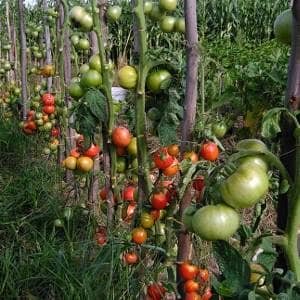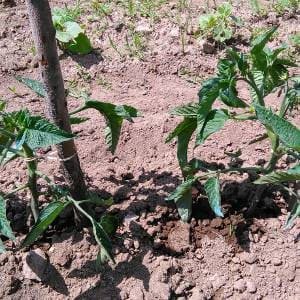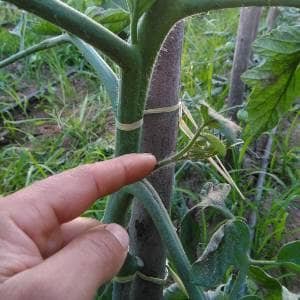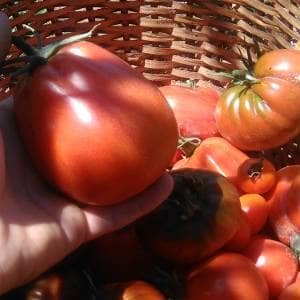How many tomatoes does each tomato plant produce
Warning: Undefined variable $ad_top in /home/u376105422/domains/mundohuerto.com/public_html/main-html-en.php on line 91
Warning: Undefined variable $ad_article in /home/u376105422/domains/mundohuerto.com/public_html/main-html-en.php on line 124
Warning: Undefined variable $ad_article in /home/u376105422/domains/mundohuerto.com/public_html/main-html-en.php on line 130
Warning: Undefined variable $ad_into_article in /home/u376105422/domains/mundohuerto.com/public_html/main-html-en.php on line 153
Warning: Undefined variable $ad_into_article_full in /home/u376105422/domains/mundohuerto.com/public_html/main-html-en.php on line 154
Warning: Undefined variable $ad_inter_item in /home/u376105422/domains/mundohuerto.com/public_html/main-html-en.php on line 155
When we plant tomatoes for the first time - or a new variety that we are not familiar with - perhaps we need to know how many tomatoes each plant will produce, in order to plan the garden and allocate more or less space to this vegetable.

The truth is that there is data on this, which can help us a lot to calculate how many kilos of tomatoes we will obtain by dedicating one or another surface of the garden to these plants.
But, in addition to giving data, we must explain what factors make the tomato plants produce more or less, because depending on whether these factors are more or less optimal, the differences can be quite notable.
Factors influencing the quantity
Land fertility, lighting, temperature, soil humidity, pests, diseases, etc. These are some of the factors that influence the number of tomatoes that each plant will produce.
Soil fertility
Tomato plants must have all the nutrients they will need to develop and produce tomatoes. Some of the most important are obtained from air - such as carbon or oxygen - but others are assimilated by the roots, so they must be present in the soil in sufficient quantity.
A soil rich in organic matter and with a slightly acidic pH usually contains all the nutrients in sufficient quantities to be assimilated by tomato plants. Otherwise, amendments would have to be made, providing those nutrients that are scarce or not available to the plants.
Liming – adding lime to the soil – improves root development, vigor and health of tomato plants and increases crop yield, which usually translates into a greater number of fruits per plant.
Lightning
Insufficient luminosity can affect the general development of the plant, as well as flowering and fertilization, so the number of fruits can be greatly compromised in regions that remain constantly cloudy.
Temperature
If they are too low, the plants do not develop ―below 10-12°C― and flowering and fruit formation are impossible.
Humidity of floor
Lack of water at key times – especially during flowering – can lead to significant yield losses.
Plant density
If the density is too high, the tomato plants will compete among themselves for soil nutrients, water and light, so each plant will be able to produce fewer tomatoes compared to another situation in which it had more space.
Here, competition with spontaneous herbs could also be considered, which grow among the crop, especially in the initial phases, when the tomato plants are small.

Spacing between tomato plants
❯ Taking into account the characteristics of the chosen variety, and if the cultivation is done outdoo...
Read morePlagues and diseases
If the crop is affected by pests or diseases, the tomato plants will weaken so production slows down, some flowers abort or part of the already formed fruits are lost and, in the last case, part or all of the plants may die.
Variety
It is known that some varieties of tomatoes produce more than others. For example, cherry tomatoes produce a large number of small fruits while other varieties, such as the Barbastro pink tomato, produce large tomatoes but in much smaller numbers.
Here it must be added that varieties of indeterminate growth, since they can produce for longer, will give more fruit than those of determinate type.

Pruning or trimming indeterminate tomato plants
❯ Each type of tomato plant is pruned in a different way, and that directly influences the number of fruits it will produce....
Read moreTomato size
In general, the larger the tomatoes a plant produces, the smaller the number of tomatoes. Let's look at some average data collected from growing experiences:
| Peso del fruto (gramos) | Número de tomates por planta |
| 15 | 410 |
| 34 | 112 |
| 150 | 58 |
| 250 | 22 |
| 270 | 18 |
| 275 | 39 |
| 290 | 25 |
| 300 | 13 |
| 325 | 29 |
As can be seen in the attached table, as the tomatoes get larger, the plant produces less of them. The data that goes out of trend may be due to one or more of the different factors that we explained above and that can influence the number of fruits and their size.
Number of tomatoes per plant
For medium-sized tomatoes, we can expect each plant to produce between 20 and 40 fruits, depending on the length of the growing season and the factors that influence production.
Performance
Yield is understood as the quantity (tons = 1000 kilos) of tomatoes produced by each hectare of land intended for cultivation. For a family garden it is more practical to talk about kg per m2.
In professional crops, yields vary greatly depending on whether it is grown in a greenhouse or not and depending on the degree of technology that occurs in each case. Yields can range from 30 to 200 t/ha, or even more. Around 120 t/ha is considered a good yield in the greenhouse, while outdoors 80 t/ha.

Guide: How to grow good tomatoes
❯ Step-by-step guide with proven and rigorous information to grow excellent tomatoes in the orchard, g...
See guide